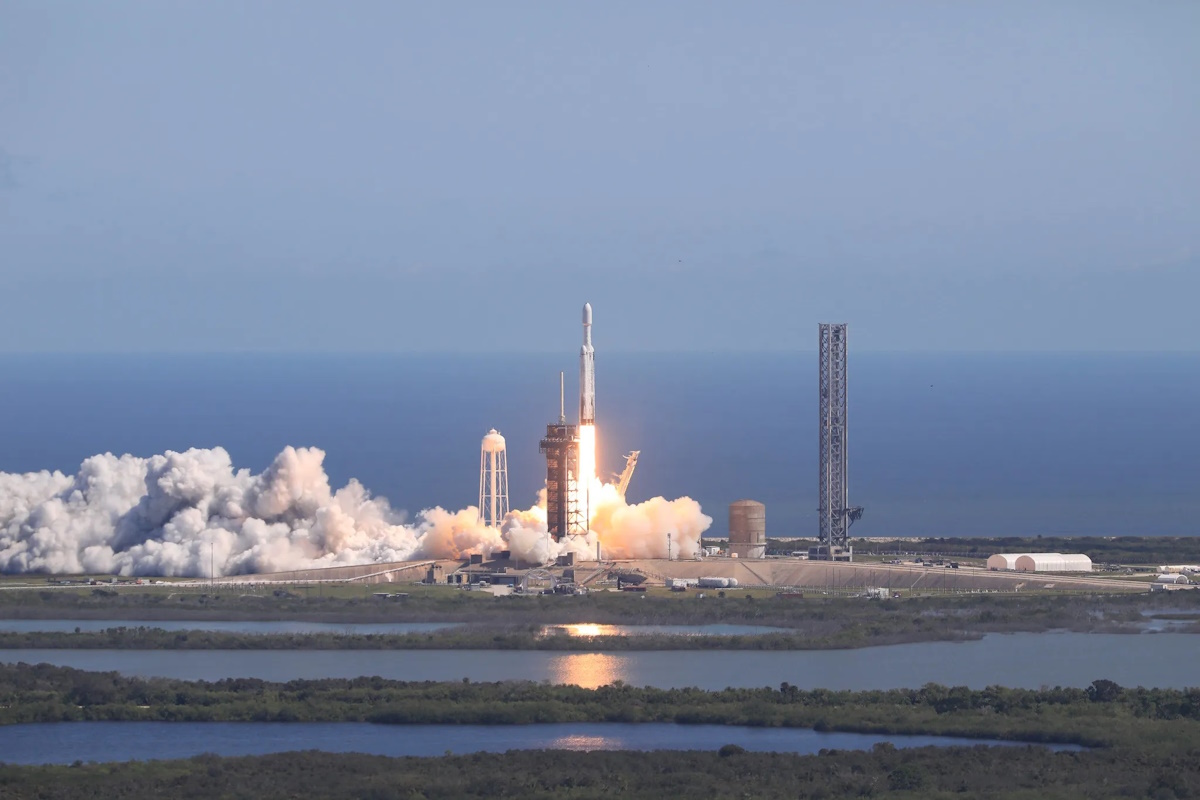NASA Sails Toward Ocean Moon of Jupiter
NASA's Europa Clipper spacecraft successfully launched from Kennedy Space Center in Florida on Monday, October 14, 2024, at 12:06 p.m. EDT. The mission marks the beginning of an ambitious journey to study Jupiter's enigmatic moon Europa, potentially unlocking secrets about the possibility of life beyond Earth.
The spacecraft, the largest ever built by NASA for a planetary mission, thundered into the sky atop a SpaceX Falcon Heavy rocket, captivating onlookers and igniting the imaginations of scientists and space enthusiasts worldwide.
Europa Clipper's voyage will span 1.8 billion miles, utilizing a clever series of gravitational assists to propel it towards its distant target. The spacecraft will first swing by Mars in February 2025, followed by a return to Earth in December 2026, before finally reaching Jupiter in April 2030.
Dr. Bonnie Buratti, the mission's project scientist, emphasized the significance of this endeavor: "We are searching for a habitable environment. Europa's subsurface ocean, which likely contains twice the volume of all Earth's oceans combined, makes it one of the most promising locations in our solar system to investigate the potential for extraterrestrial life".
Once in Jupiter's orbit, Europa Clipper will perform an intricate dance with Europa, conducting 49 close flybys over four years. These passes will allow the spacecraft to gather crucial data about the moon's composition, internal structure, and geological features, all while navigating the intense radiation environment surrounding Jupiter.
Jordan Evans, Europa Clipper's project manager, highlighted the mission's groundbreaking nature: "This launch isn't just the next chapter in our exploration of the solar system; it's a leap toward uncovering the mysteries of another ocean world, driven by our shared curiosity and continued search to answer the question, 'are we alone?'"
As Europa Clipper embarks on its historic journey, it carries with it the hopes and aspirations of thousands of scientists, engineers, and space enthusiasts. This mission represents not only a technological marvel but also humanity's enduring quest to understand our place in the cosmos and the potential for life beyond our home planet.
The spacecraft, the largest ever built by NASA for a planetary mission, thundered into the sky atop a SpaceX Falcon Heavy rocket, captivating onlookers and igniting the imaginations of scientists and space enthusiasts worldwide.
 |
Credit: NASA/Kim Shiflett |
Europa Clipper's voyage will span 1.8 billion miles, utilizing a clever series of gravitational assists to propel it towards its distant target. The spacecraft will first swing by Mars in February 2025, followed by a return to Earth in December 2026, before finally reaching Jupiter in April 2030.
Dr. Bonnie Buratti, the mission's project scientist, emphasized the significance of this endeavor: "We are searching for a habitable environment. Europa's subsurface ocean, which likely contains twice the volume of all Earth's oceans combined, makes it one of the most promising locations in our solar system to investigate the potential for extraterrestrial life".
Once in Jupiter's orbit, Europa Clipper will perform an intricate dance with Europa, conducting 49 close flybys over four years. These passes will allow the spacecraft to gather crucial data about the moon's composition, internal structure, and geological features, all while navigating the intense radiation environment surrounding Jupiter.
Jordan Evans, Europa Clipper's project manager, highlighted the mission's groundbreaking nature: "This launch isn't just the next chapter in our exploration of the solar system; it's a leap toward uncovering the mysteries of another ocean world, driven by our shared curiosity and continued search to answer the question, 'are we alone?'"
As Europa Clipper embarks on its historic journey, it carries with it the hopes and aspirations of thousands of scientists, engineers, and space enthusiasts. This mission represents not only a technological marvel but also humanity's enduring quest to understand our place in the cosmos and the potential for life beyond our home planet.

